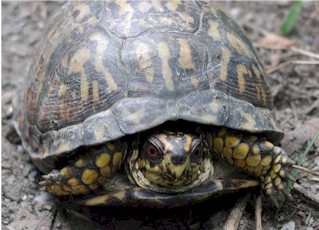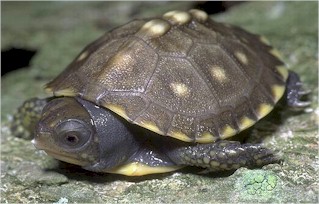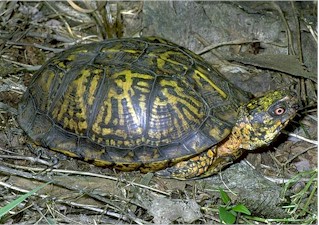Terrapene carolina
 |
 |
 |
Description
The high-domed shell is the most prominent feature of the box turtle. Closer examination reveals that the lower shell, called the plastron, is hinged, enabling the shell to be closed much like a box. Both the upper shell, called the carapace, and the plastron, are typically dark brown to black in color with many Varying streaks, spots, and lines of yellow
Habitat
Box turtles can be found in a variety of habitats from fields to forests, although they seem to prefer moist situations when possible. During hot, dry weather, box turtles will often seek out springs and seepages where they dig deeply into the cool mud. They spend much of their time buried in the leaves and dirt of the forest floor, emerging to feed, especially after or during rainstorms.
Range
Exclusively North American, box turtles occupy the eastern United States ranging from southern Maine to Florida along the East Coast, and west to Michigan, Illinois, eastern Kansas, Oklahoma, and Texas. Due to its popularity as a household pet, T. carolina is sometimes found far outside its normal geographic range.